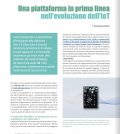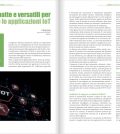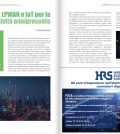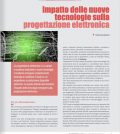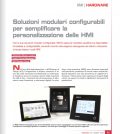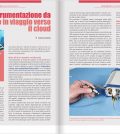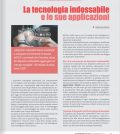EONews Virtual Panel – Internet of Things (IoT): market opportunities in the smart devices
An exclusive interview with Frank Krämer, technical marketing director EMEA , Altium

EONEWS: The “Internet of Things” (IoT) emerging trend, and the intelligent endpoints connected everywhere in residential and industrial environments, are introducing a higher level of automation and quality in the electronic systems and product lifecycle management.
From your point of view, what kind of new market opportunities do you envision in the smart devices and distribuited intelligence world?
KRÄMER: From our perspective at Altium we have been looking at new opportunities around “Internet of Things” for a while and actually invested quite a lot in new technology.
It hasn’t been a secret that we see the IoT trend as an important technology and a potential ‘game changer’ for electronic designers and beyond. There are various aspects of this: Electronics is heavily moving into traditionally ‘non electronics’ domains and we see the need to cope with the complexity of electronic design processes in the mechanical, medical or even clothing industry – and there are more.
We address this with a leading 3D ECAD/MCAD approach that allows PCB design in 3D and facilitates the integration into MCAD flows.But more importantly, we provide a unified design flow that intelligently combines various design flows for PCB, FPGA and Embedded into one platform with huge benefits for co-design aspects.
On top of this we recently released our Altium Vault Server as the core of our data management strategy to ‘tame the electronics data beast’ with life cycle based management of components, re-usable blocks, where-used functionality and highly reproducible and reliable release processes for all data needed for manufacturing and documentation as well as integration into higher level PLM/PDM/ERP-systems.
This combination of Altium Designer and Altium Vault Server provides the control and security needed to move an idea of a new IoT project to life and safely into production.
Another aspect is going beyond the traditional design tool boundaries: This is about how to manage smart devices, how to create device ecosystems and how to ‘stay connected to my products once they are out in the field’.Our vault technology provides the foundation to move into this area and provide device life cycle management functionality and cloud based connection to devices or full applications.
Users of such a system will see tremendous benefits when it comes to ‘simple’ things like programming the right bit stream into the flash, or updating the firmware in the field. With the technology we have been working on over the last years, this is like a natural next step for Altiums data management capabilities.
EONEWS:The Internet of Things can represent a new business opportunity, but also a potential security risk. What is your opinion regarding the dangers, the threats and the new IT risks that IoT can bring, with the possibility to increase the vulnerability of systems in the industrial environments, and not only?
KRÄMER: The potential security risk can not be neglected – that’s for sure. There is a huge amount of activities in this area and just recently at Embedded World in Nuremberg the main topic was how to secure cloud based or connected systems.
Most importantly the potential risk needs to be recognised while creating applications already and this will be a whole new education process on its own. Simple and light weight design decision from the past standalone devices might now became a major risk for a system.
At Altium we actually invest as well in this area – unfortunately there is no simple answer to the problem. First thing is to create awareness of the potential risks and – to be safe – think in worst case scenarios to be prepared.
Giorgio Fusari
Contenuti correlati
-
Una piattaforma in prima linea nell’evoluzione dell’IoT
I livelli di produttività e le caratteristiche all’avanguardia della piattaforma Serie 3 di Silicon Labs di prossima introduzione permetteranno lo sviluppo di nuove applicazioni e di funzionalità innovative nei più diversi settori, dalla produzione alla vendita al...
-
Antenne compatte e versatili per migliorare le applicazioni IoT
La scelta dell’antenna giusta può rivestire un’importanza fondamentale per il successo di un’applicazione IoT (Internet of Things) wireless. Un’antenna in grado di offrire prestazioni elevate e la flessibilità necessaria per supportare reti differenti può contribuire a migliorare...
-
5G, LPWAN e IoT per la connettività onnipresente
In questo articolo viene descritta la necessità di una connettività che sia presente in ogni luogo sfruttando le tecnologie 5G, LPWAN e IoT. Inoltre, vengono descritti sinteticamente i capisaldi dell’architettura della rete 5G, della rete LPWAN e...
-
Renesas completa l’acquisizione di Altium
Renesas Electronics ha annunciato il completamento dell’acquisizione di Altium. L’operazione getta le basi per creare un’innovativa piattaforma di progettazione e gestione del ciclo di vita dei sistemi elettronici. Con la transazione appena conclusa, Altium è diventata una...
-
Impatto delle nuove tecnologie sulla progettazione elettronica
La progettazione elettronica è un campo in continua evoluzione e nuove tecnologie e tendenze emergono costantemente destinate a modellare il modo in cui progettiamo e produciamo dispositivi elettronici. In questo articolo descriveremo l’impatto delle tecnologie emergenti sulla...
-
Una nuova iniziativa per l’interoperabilità per l’IoT industriale
Si chiama Margo la nuova iniziativa per fornire interoperabilità per gli ecosistemi IoT industriali nata dalla collaborazione tra ABB (inclusa B&R), Capgemini, Microsoft, Rockwell Automation, Schneider Electric (inclusa AVEVA) e Siemens. Questa iniziativa è ospitata dalla Linux...
-
Monitoraggio dei processi industriali con il microcontrollore ESP32
Un sistema di monitoraggio dei processi industriali è molto utile per la piccola e media industria per ottenere il massimo rendimento della produzione ed evitare guasti ai macchinari e incidenti. Un sistema di monitoraggio e sicurezza semplice...
-
Soluzioni modulari configurabili per semplificare la personalizzazione delle HMI
Con le sue soluzioni modulari configurabili, SECO assicura il perfetto equilibrio tra disponibilità immediata e configurabilità, venendo incontro alle esigenze eterogenee dei clienti e riducendo al tempo stesso i costi NRE Leggi l’articolo completo su EMB92
-
La strumentazione da laboratorio in viaggio verso il cloud
La tendenza è chiara: il software assume un ruolo sempre più importante nelle misurazioni. E anche se per il momento si è ancora lontani dall’aver trovato applicazioni che sostituiscano gli strumenti più evoluti, miniaturizzazione, connettività IoT e...
-
La tecnologia indossabile e le sue applicazioni
I dispositivi indossabili hanno contribuito a sviluppare enormemente l’industria dell’IoT e si prevede che l’industria stessa dei dispositivi indossabili raggiungerà nel mercato mondiale i 100 miliardi di dollari entro il 2027 Leggi l’articolo completo su EO 516


